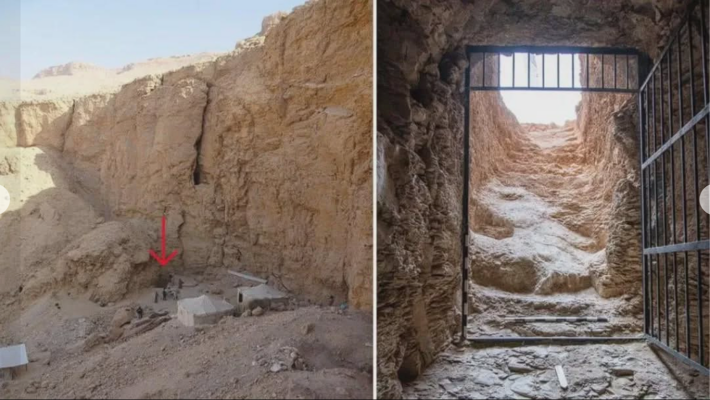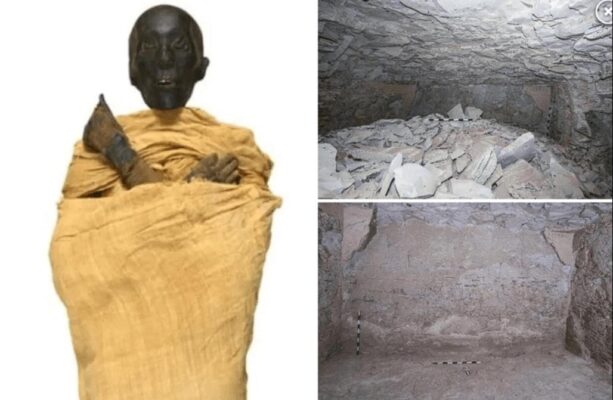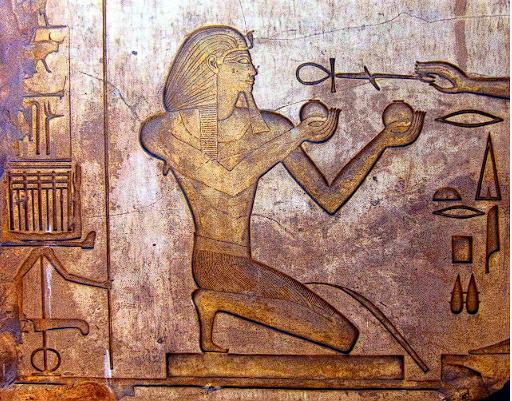The recent discovery of Thutmose II’s tomb marks a significant milestone in Egyptology, representing the first pharaoh’s tomb unearthed since Tutankhamun’s over a century ago. This find sheds new light on the 18th Dynasty and its royal burials.
A Historic Discovery in the Valley of the Kings
The unearthing of Thutmose II’s tomb is a momentous occasion, adding to our understanding of ancient Egyptian burial practices and royal history.
First Pharaoh’s Tomb Since Tutankhamun
The discovery of Thutmose II’s tomb is the first of its kind in over a century, reigniting interest in the Valley of the Kings and its hidden treasures.
- A Century of Waiting:
- The long gap between the discoveries of Tutankhamun and Thutmose II highlights the rarity of such finds.
- This discovery has energized the archaeological community and the public alike.
- Significance of the Find:
- The tomb’s discovery provides valuable insights into the burial customs and beliefs of the 18th Dynasty.
- It offers a chance to study the artifacts and remains of a pharaoh who played a crucial role in Egyptian history.
- Renewed Interest in Egyptology:
- The discovery has sparked renewed interest in Egyptology, with researchers eager to learn more about Thutmose II and his reign.
- It has also generated excitement among the public, who are fascinated by the mysteries of ancient Egypt.
Thutmose II: Husband of Queen Hatshepsut
Thutmose II’s connection to the powerful Queen Hatshepsut adds another layer of intrigue to this archaeological find.
- Royal Connection:
- Thutmose II’s marriage to Hatshepsut was a significant political alliance, shaping the course of Egyptian history.
- Their relationship and joint rule have been subjects of intense historical scrutiny.
- 18th Dynasty Significance:
- Thutmose II was a key figure in the 18th Dynasty, a period of great prosperity and expansion for ancient Egypt.
- His reign and legacy have been reevaluated in light of this new discovery.
- Completing the Royal Puzzle:
- Finding his tomb, is helping to complete the royal burial puzzle of the 18th dynasty.
- The find is helping to give more clearity to the time period.
Last Undiscovered Royal Tomb
Thutmose II’s tomb was the last undiscovered royal burial site from the 18th Dynasty, making its discovery a historic event.
- End of an Era:
- The discovery marks the end of an era in which the whereabouts of Thutmose II’s tomb remained a mystery.
- It closes a chapter in the search for the lost tombs of the 18th Dynasty.
- Archaeological Significance:
- The tomb’s discovery provides valuable archaeological data, allowing researchers to study the burial practices and artifacts of the period.
- The finding gives more information about the 18th dynasty’s royal burial procedures.
- Historical Completion:
- The finding of the tomb, gives a more complete historical picture of the 18th dynasty.
- The discovery is a very important historical find.

Implications and Future Research
The discovery of Thutmose II’s tomb has significant implications for our understanding of ancient Egyptian history and opens up new avenues for research.
New Insights into the 18th Dynasty
The tomb’s discovery will provide valuable insights into the 18th Dynasty, a period of great significance in Egyptian history.
- Burial Practices:
- The tomb’s layout and contents will reveal new information about the burial practices of the 18th Dynasty.
- Researchers will be able to study the artifacts and remains to gain a deeper understanding of ancient Egyptian beliefs and rituals.
- Royal Lineage:
- The discovery may shed light on the royal lineage and relationships within the 18th Dynasty.
- DNA analysis and other scientific techniques could provide new information about Thutmose II’s family and descendants.
- Historical Context:
- The tomb’s discovery will help to contextualize Thutmose II’s reign and its place in Egyptian history.
- It will allow researchers to reevaluate existing theories and develop new interpretations of the period.
Potential for Further Discoveries
The discovery of Thutmose II’s tomb may lead to further discoveries in the Valley of the Kings and other archaeological sites in Egypt.
- Hidden Chambers:
- The tomb may contain hidden chambers or passages that have yet to be explored.
- These areas could hold additional artifacts and information about Thutmose II and his reign.
- Nearby Sites:
- The discovery may prompt further excavations at nearby sites, potentially revealing other undiscovered tombs or artifacts.
- Researchers may uncover new evidence that sheds light on the broader history of the region.
- Advanced Technology:
- With the use of modern technology, such as ground penetrating radar, and other high tech equipment, archeologists can now see things that where not possible before.
- These new technologies, will hopefully reveal more of ancient egypts secrets.

Preservation and Conservation
The preservation and conservation of Thutmose II’s tomb and its artifacts are crucial for future generations of researchers and visitors.
- Artifact Preservation:
- Efforts will be made to preserve the artifacts found in the tomb, ensuring their longevity and accessibility.
- Conservationists will work to protect the delicate materials from damage and decay.
- Tomb Conservation:
- The tomb itself will require careful conservation to protect it from environmental factors and human activity.
- Measures will be taken to ensure the tomb’s structural integrity and prevent further deterioration.
- Educational Opportunities:
- The discovery presents educational opportunities for researchers and the public.
- Museum displays, documentaries, and research papers, will help to share this historical find with the world.

The discovery of Thutmose II’s tomb is a momentous occasion that will undoubtedly enrich our understanding of ancient Egyptian history and culture. It is a testament to the enduring allure of Egyptology and the ongoing quest to uncover the secrets of the past.

CÁC TIN KHÁC
Mary Walton: The Forgotten Inventor Who Helped Clean Up America’s Cities
Tomb of Queen Nefertari in the Valley of the Queens, Egypt
Discover the Hypostyle Hall of the Temple of Hathor at Dendera
Venus de Losange: Unveiling the Mystery of a 20,000-Year-Old Paleolithic Icon